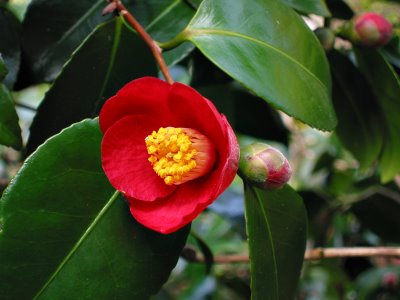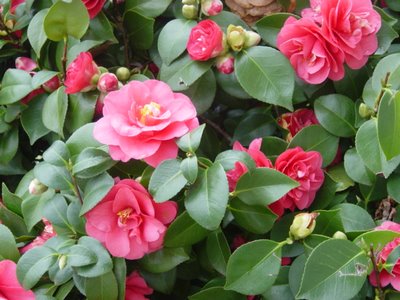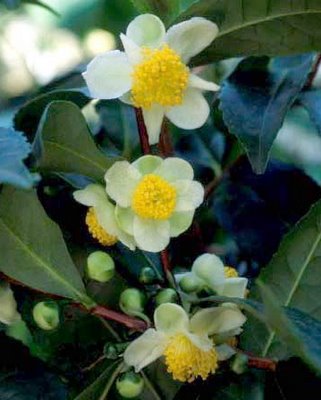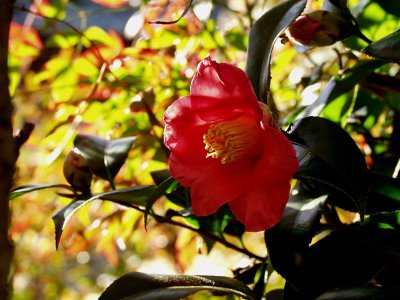Camellia

Scientific Classification
Kingdom Plantae
Division Magnoliophyta
Class Magnoliopsida
Order Ericales
Family Theaceae
Genus Camellia
Camellia (Tsubaki in Japanese) is a genus of flowering plants in the family Theaceae, native to eastern and southern Asia from the Himalaya east to Japan and Indonesia. There is some controversy over the number of existent species, with anything from 100–250 species being accepted. The genus was named by Linnaeus after Fr. Georg Joseph Kamel S.J., a Jesuit botanist.
They are evergreen shrubs and small trees from 2-20 m tall. The leaves are alternately arranged, simple, thick, serrated, usually glossy, and 3–17 cm long. The flowers are large and conspicuous, 1–12 cm diameter, with (in natural conditions) 5–9 petals; colour varies from white to pink and red, and yellow in a few species. The fruit is a dry capsule subdivided into 1–5 compartments, each containing 1–8 seeds.
The genus is generally adapted to acidic soils, and does not grow well on chalk or other calcium rich soils. Most species also have a high rainfall requirement and will not tolerate drought.
Camellia species are used as food plants by the larvae of a number of Lepidoptera species.
Cultivation And Uses
Carmellia sinensis
Carmellia sinensis is of major commercial importance because tea is made from its leaves. Tea oil is a sweet seasoning and cooking oil made by pressing the seeds of Camellia sinensis or Camellia oleifera
Double flowers Camellia
Many other camellias are grown as ornamental plants for their flowers; about 3,000 cultivars and hybrids have been selected, many with double flowers. Camellia japonica (often simply called Camellia) is the most prominent species in cultivation, with over 2,000 named cultivars; next are C. reticulata, with over 400 named cultivars, and C. sasquana, with over 300 named cultivars. Popular hybrids include C. × hiemalis (C. japonica × C. sasquana) and C. × williamsii (C. japonica × C. salouenensis). They are highly valued in Japan and elsewhere for their very early flowering, often among the first flowers to appear in the late winter. Late frosts can damage the flowers.
Camellia japonica 'Myrtifolia'
Camellias have a slow growth rate. Typically they will grow about 30 centimetres a year until mature although this varies depending on variety and location.
Camellia japonica is the state flower of Alabama as well as the city flower of the Chinese municipality Chongqing.










0 Comments:
Post a Comment
<< Home